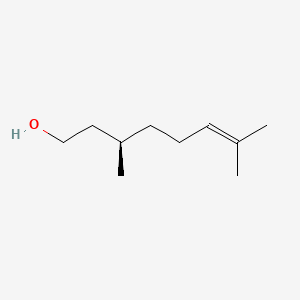| Authors | Title | Published | Journal | PubMed Link |
|---|---|---|---|---|
| Kim J et al. | Male-produced aggregation pheromone blend in Platypus koryoensis. | 2009 | J. Agric. Food Chem. | pmid:19170509 |
| Mendonça Ade L et al. | Antimicrobial activities of components of the glandular secretions of leaf cutting ants of the genus Atta. | 2009 | Antonie Van Leeuwenhoek | pmid:19214771 |
| Faria JM et al. | Biotransformation of menthol and geraniol by hairy root cultures of Anethum graveolens: effect on growth and volatile components. | 2009 | Biotechnol. Lett. | pmid:19205895 |
| Gao P et al. | Expeditious construction of (+)-mintlactone via intramolecular hetero-Pauson-Khand reaction. | 2009 | J. Org. Chem. | pmid:19228032 |
| Duchêne E et al. | A grapevine (Vitis vinifera L.) deoxy-D: -xylulose synthase gene colocates with a major quantitative trait loci for terpenol content. | 2009 | Theor. Appl. Genet. | pmid:19002427 |
| Gonçalves B et al. | Effects of elevated CO2 on grapevine (Vitis vinifera L.): volatile composition, phenolic content, and in vitro antioxidant activity of red wine. | 2009 | J. Agric. Food Chem. | pmid:19072054 |
| Kurusu S et al. | Group IVA phospholipase A(2) activity may mediate prostaglandin F(2alpha)-induced luteal regression in pseudopregnant rats. | 2009 | Prostaglandins Other Lipid Mediat. | pmid:19703580 |
| Chávez-Avilés M et al. | The Pseudomonas aeruginosa liuE gene encodes the 3-hydroxy-3-methylglutaryl coenzyme A lyase, involved in leucine and acyclic terpene catabolism. | 2009 | FEMS Microbiol. Lett. | pmid:19459965 |
| Bagheri-Gavkosh S et al. | Inhibitory effects of Ephedra major Host on Aspergillus parasiticus growth and aflatoxin production. | 2009 | Mycopathologia | pmid:19557546 |
| Linkous A et al. | Cytosolic phospholipase A2: targeting cancer through the tumor vasculature. | 2009 | Clin. Cancer Res. | pmid:19240173 |
beta-Citronellol
Beta-citronellol is a lipid of Prenol Lipids (PR) class. The involved functions are known as Glycolysis.
Cross Reference
Introduction
To understand associated biological information of beta-Citronellol, we collected biological information of abnormalities, associated pathways, cellular/molecular locations, biological functions, related genes/proteins, lipids and common seen animal/experimental models with organized paragraphs from literatures.
What diseases are associated with beta-Citronellol?
There are no associated biomedical information in the current reference collection.
No disease MeSH terms mapped to the current reference collection.
PubChem Associated disorders and diseases
What pathways are associated with beta-Citronellol
There are no associated biomedical information in the current reference collection.
PubChem Biomolecular Interactions and Pathways
Link to PubChem Biomolecular Interactions and PathwaysWhat cellular locations are associated with beta-Citronellol?
There are no associated biomedical information in the current reference collection.
What functions are associated with beta-Citronellol?
Related references are published most in these journals:
| Function | Cross reference | Weighted score | Related literatures |
|---|
What lipids are associated with beta-Citronellol?
There are no associated biomedical information in the current reference collection.
What genes are associated with beta-Citronellol?
There are no associated biomedical information in the current reference collection.
What common seen animal models are associated with beta-Citronellol?
There are no associated biomedical information in the current reference collection.
